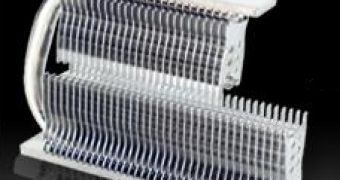There are a lot of components on a computer that require cooling so that they would function for longer periods of time or even increase their potential. The main heat sources on a computer are the CPU , the Northbridge, Southbridge, graphics card and the MOSFET. All of these usually require additional cooling systems so that they can function properly. Of course, you might say that for the CPU and graphics card, it's only natural that cooling is required, but as chips get smaller and smaller, it's the everlasting need for more performance that mostly bothers the minds of the consumers; in order to get performance out of a system, it must have top of the line components, and these, in turn, usually run at their maximum capacity and even beyond, which results in a lot of heat generation.
As for cooling solutions, the market is full with them; and most recently, people have taken this cooling thing to the next level, custom cooling. That usually implies either bright LEDs or water cooling with UV reactive materials being added to the distilled water so that they may "glow in the dark". But one recent endeavor comes from Thermalright, which have designed a passive cooler for the MOSFETs. Their design was motivated by "many end-users" which "have written" that "they got tired of gimmicks and low grade thermal solutions".
The end result is the HR-09 (High-Riser series) MOSFET cooler; it is a pretty interestingly designed cooler and comes in two versions, the HR-09U and the HR-09S. The first sits upright and is made out of two sets of fins set on top of one another on metal bases, with a heatpipe running through both. The second one has the same design, with only the upper part being tilted outwards, so that if you place a massive cooler on the CPU, it doesn't get in the way. Although both solutions rely on passive cooling, there's a pretty good chance to fit a 50mm or 60mm cooler on the side, just to get the air flow to move along the fins for better cooling. Or, if you have a CPU cooler that is smart enough, it may be designed to blow air sideways, not only downwards and you're off the hook.

 14 DAY TRIAL //
14 DAY TRIAL //